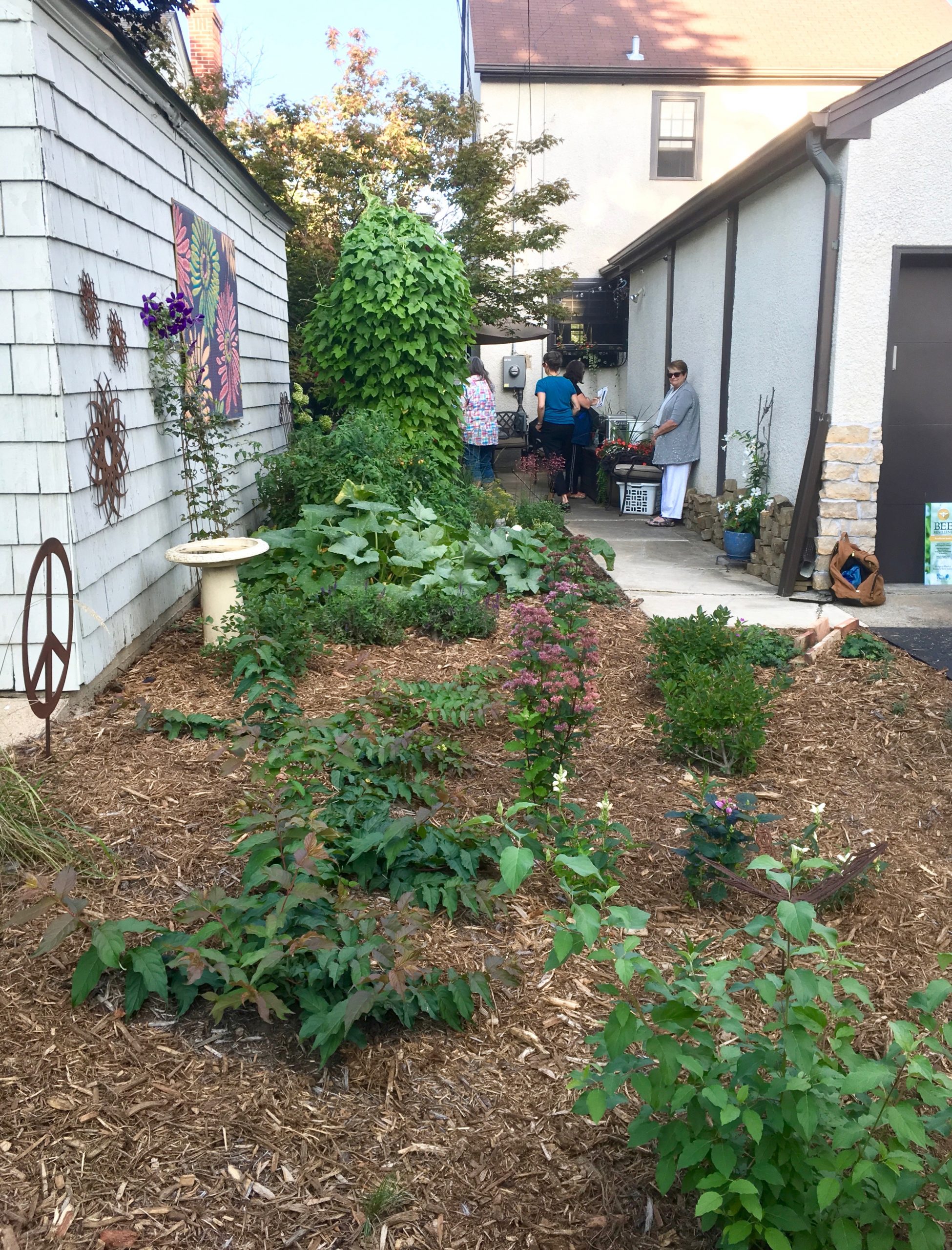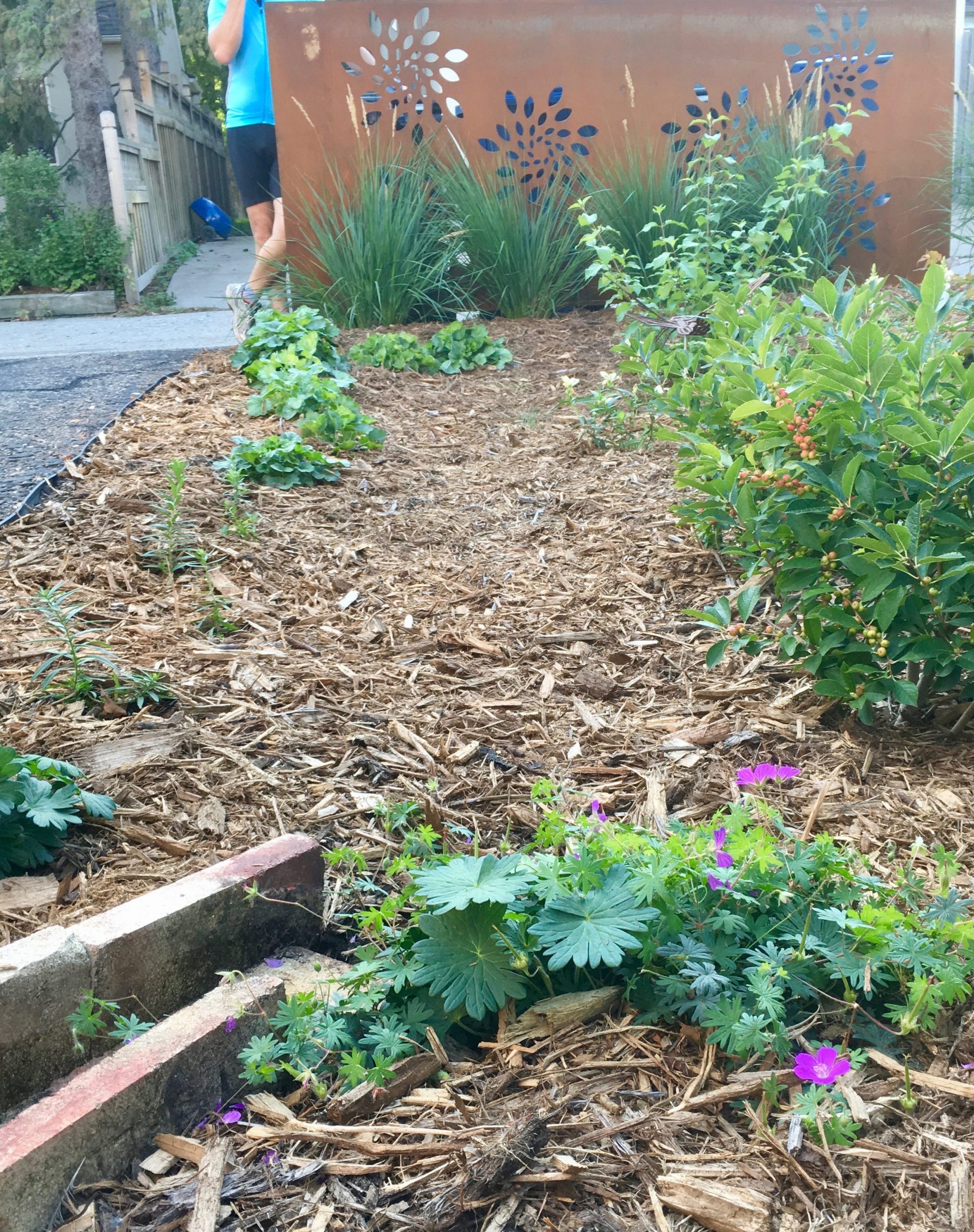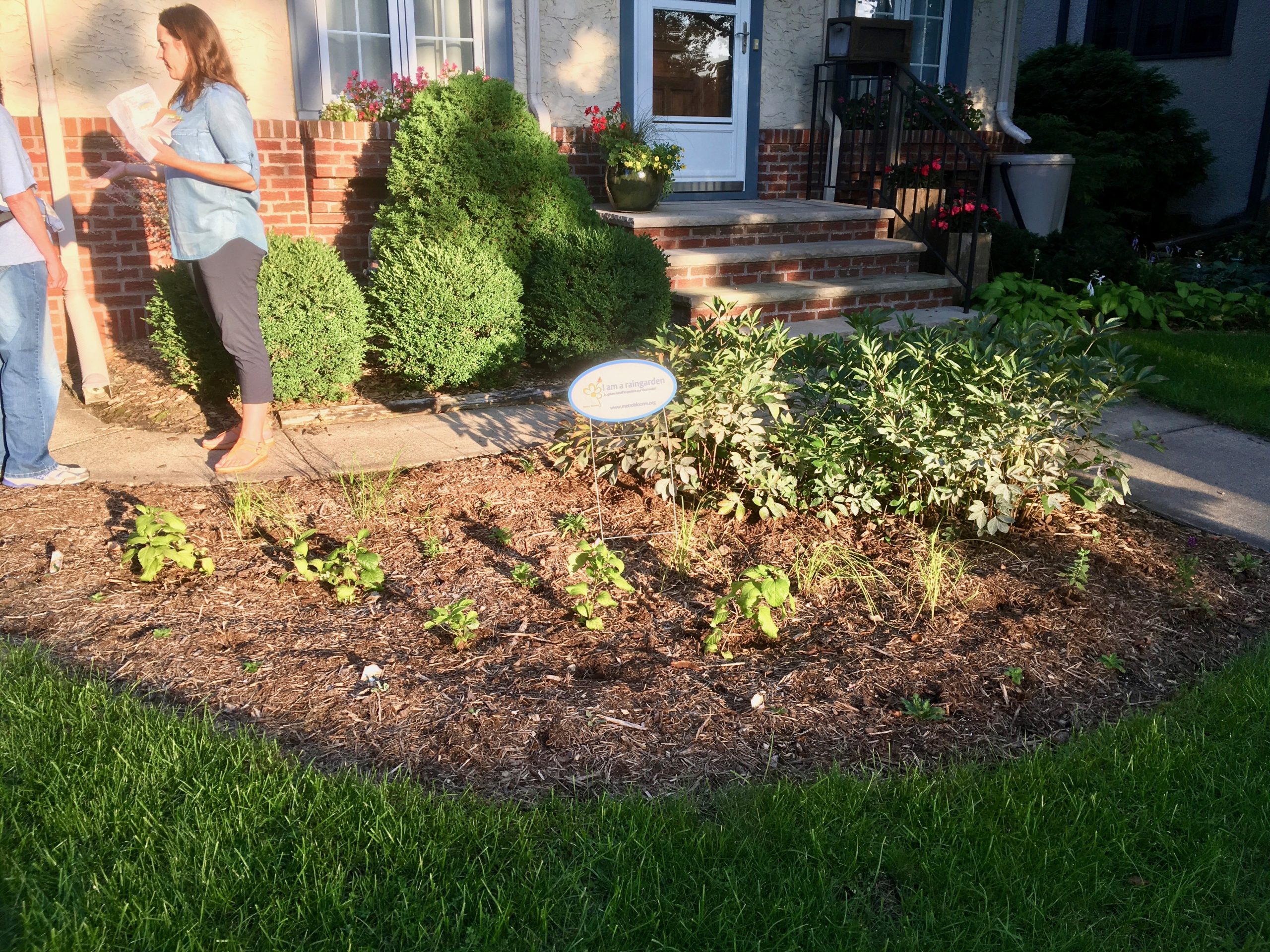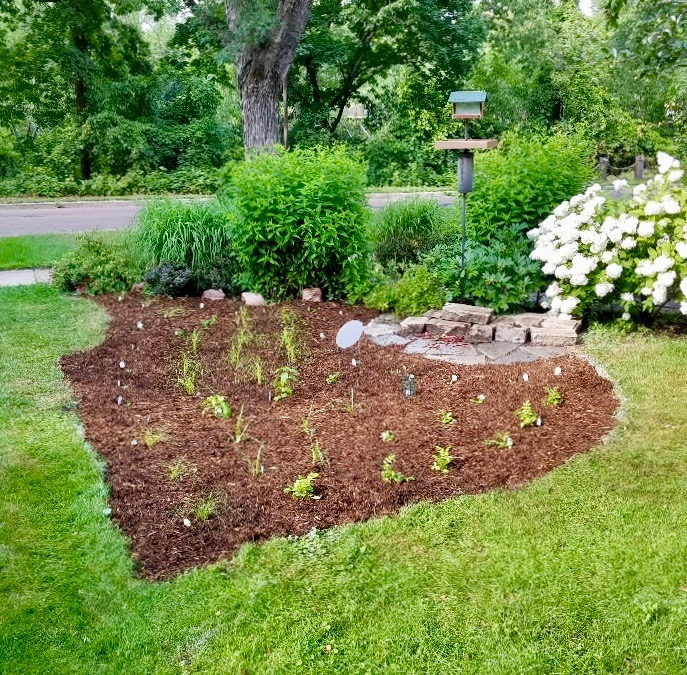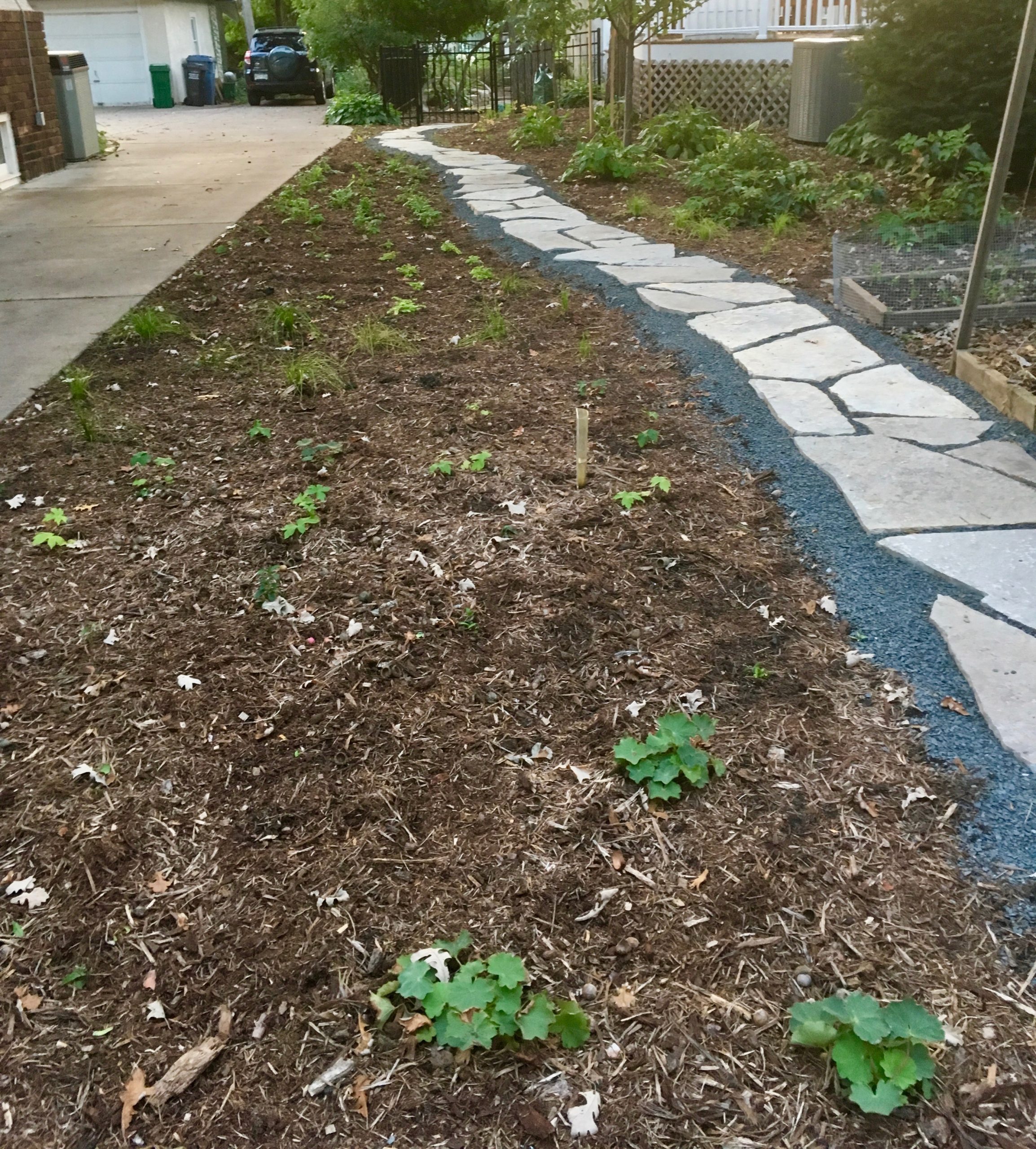Three raingardens and a yard with native plantings were featured on a recent tour of a Metro Blooms project in Minneapolis’ Lynnhurst neighborhood. They were part of a program that makes environmentally-friendly landscaping and gardening strategies available to residents at a significant savings. It’s called Lynnhurst Yards and Gardens for Clean Water.
The program is a partnership between the Lynnhurst Neighborhood Association, organized by its environmental committee, and Metro Blooms. The committee provided reimbursable grants to help lower costs to participants for raingardens, native plantings or alternatives to grass turf. Metro Blooms provided technical expertise, including the designs, ordering the plants, and supervising the installation work by the Conservation Corps Minnesota & Iowa. The final step, planting, was left to the owner.
Thank you to the Environmental Committee for organizing the tour!
1st stop:
(L) This large raingarden, planted in 2017, replaced a lawn. It is located between two properties, capturing stormwater from the garages on both properties.
(R) Details make a difference. Bottom left: The terra-cotta channel directs water from the garage downspout into the raingarden. Top: The flower cutouts in the metal art fence look like they’re growing from the feather reed grass just beneath them!
2nd stop
Raingardens come in smaller sizes, too. This front-yard raingarden, installed in July, has a simple, neat aesthetic to fit in with the yard’s tidy look. It captures runoff from the roof. (R) The downspout is on the left of the photo, above the sidewalk. Raingardens can incorporate existing plants: the taller peonies were there previously.
3rd stop:
(L) Another raingarden, planted in July, in a front yard that slopes downward toward the street. Some of the plants here include Jacob’s ladder, rose turtlehead and fox sedge.
(R) Though it wasn’t our work, we had to take a photo of the clover (sign says: Bee Safe Yard) lawn, in the same yard as the raingarden. The conventional grass lawn was not growing well in this shady spot. Earlier this summer, the owner over-seeded with a clover/fescues mix, and hasn’t mowed since!
4th stop:
A few weeks back, this was all grass lawn. It was just replaced with native plantings that do well in shade and provide habitat, and the area will not need mowing. The goal: low-maintenance landscaping that would also be a positive contribution to the environment. Once the plants are established, they will require less water than a conventional lawn. Some of the plants in this project include maidenhair fern and Jacob’s ladder. Note: We can’t take credit for the lovely stepping stones, but we worked with the homeowner on a design incorporating them.
– Aleli Balagtas, Metro Blooms Reporter, aleli@metroblooms.org
